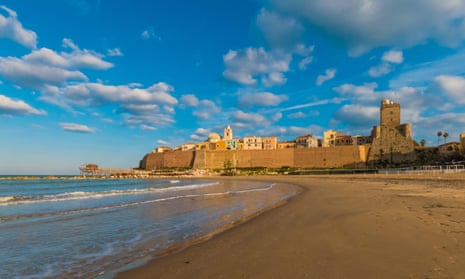Feel like your perfect holiday destination doesn’t exist? It’s a growing problem, with pre-pandemic issues about overtourism mixing with post-Covid wariness of cities and crowded beaches. The answer could be Molise, a region that doesn’t even exist for most Italians (it’s the one usually missed out by people asked to name all 20) and whose non-existence – “Il Molise non esiste” – has become a meme, a hashtag and the subject of thousands of Instagram posts.
Molise has, in fact, existed for millennia: it was home to the Samnite civilisation in the fourth century BC, and later part of the Kingdom of Naples. But it was mashed together at unification with Abruzzo, from which it didn’t effectively split until 1970, making Molise the youngest region in Italy. And through all this, its sandy beaches, rugged mountains and ancient settlements have stayed – rarely intentionally – well under the tourist radar. For much of the 20th century, depopulation rather than crowds was its main problem. Robert De Niro’s forebears headed to the US from the 2,000-year-old Molisean hill town of Ferrazzano, but he never shouted about it. Which leaves this sunny, hilly, friendly region ripe for exploring.
Termoli

On summer weekends, the main town on Molise’s coast doesn’t feel under-visited, though the tourists strolling its pastel-painted narrow streets are mostly Italians. Founded in around the 10th century, Termoli’s walled old town occupies a promontory featuring a castle, a cathedral and seaside ramparts where ancient fishing equipment, called trabucche, jut out over the sea. The 19th-century “new” town is also an enjoyable wander, especially pedestrianised Corso Nazionale, with its shops, restaurants and street sculptures.
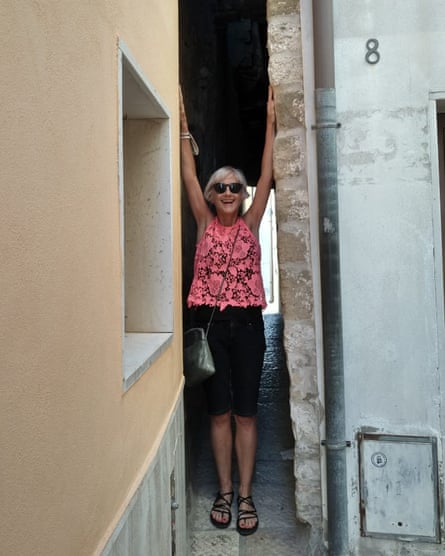
Midweek, the old town settles into a quiet life, with laundry drying over ancient flagstones and the sea glittering turquoise at the end of every alley. One of these, A Rejecelle, is said to be the narrowest in Italy. At one point it is just 34cm wide: husband had to shuffle sideways or his shoulders would have stuck.
The main reason to come to Termoli is the beach, which runs in a shallow, sandy bay north-west all the way to the Abruzzo border. Close to town, along Lungomare Cristoforo Colombo, it’s all classic Italian ranks of sunbeds, but these soon peter out. The areas of free beach between the concessions become bigger and more frequent after just a kilometre. Near Lido Alcione, 2km from town, is a lovely big spiaggia libera with soft sand sloping to the warm, clear Adriatic. This area is perfect cycling territory: hire from Tesla Bike, near Termoli station, which also has fatbikes and e-bikes. Most people, however, could manage with a pushbike on the flat, traffic-free Ciclovia Adriatica – which runs all the way to Trieste in the far north-east – stopping off to swim from quiet beaches, and filling up at low-cost feet-in-the sand fish restaurants.
Ventotto beach, 12km from Termoli, is a marvel of wide, soft sand backed by pinewoods, with barely a building in sight (no loos or bar!) and plenty of parking in the dunes.

Avoid the dismal town of Marina di Petacciato and head another 7km north to pretty Marina di Montenero, a low-rise resort with two small hotels and a handful of campsites. Villaggio Camping Lianna has a bar right on the beach and bungalows for four from €450 a week. We bought home-produced olive oil and freshly picked figs from a family on Viale Agostini, just outside the campsite.
Stay
In the old town, Locanda Alfieri (doubles from €99 B&B) is an albergo diffuso with stylish modern bedrooms in several atmospheric buildings, and generous breakfasts served in a plant-filled courtyard. One Covid-inspired innovation is an app that lets guests order meals from nearby restaurants to eat in bedrooms or the breakfast room.

Eat
Don’t miss a cheap supper from Eattico “street fish” restaurant at A Rejecelle’s eastern end, or pizza and seafood pasta at Sognadoro a minute from the Locanda’s reception. For a treat, book ahead at Da Nicolino near the castle, whose speciality is brodetto alla termolese, the local fish stew blowout (€33 a head).
Inland
West of Termoli, the land rises gradually towards the Apennines, with wheat fields and olive groves in the Biferno valley and market towns on hills above. Dating from the 12th century, San Martino in Pensilis has a baronial palace, ancient churches and stupendous views from its square.
The Siena palio may be world famous but there’s more intimate excitement in this town on 30 April, when it marks the Feast of San Leo with a 9km race between teams of oxen pulling wooden carts, driven by men in full medieval costume. There’s loud singing from passionate fans in the colours of their teams, and mounted knights urging each cart onwards. The beasts are pampered year-round to be in tip-top condition for this one day.

San Martino’s other claim to fame can be enjoyed any time of year. Served hot, warm or cold, as a nibble, an antipasto or given as a gift, pampanella is a spicy, moreish speciality of slow-roast whole pig, marinated in garlic and chilli and a little vinegar, then covered in vine leaves and baked overnight. It’s sold in several shops: Pepe at Pampanella la Vecchia on Via Pace makes it on site every day, and sells out by 2pm.
Larger Larino to the south-east is much older. Already a city in the third century BC, it’s the site of a Roman victory against Hannibal in the second Punic war, and well-preserved Roman remains include a 2,000-year-old elliptical amphitheatre, baths with splendid mosaics of marine animals and a paved forum (Weds-Sun, free, guided tour extra).
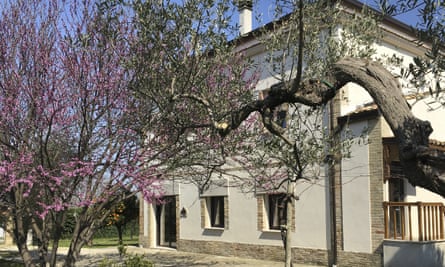
Stay
Parco dei Buoi is a peaceful organic farm where Francesco Travaglini is the fourth generation to farm sheep, grains, vegetables and olive oil (which now sells worldwide). He recently added four serene en suite doubles (€109 B&B), and the family’s Maremmano-Abruzzese sheepdog makes guests feel welcome. Breakfast is particularly good (“it’s part of the holiday!”): peasant friselle bread soaked in oil with tomatoes and oregano fresh from the garden, plus fruit and abundant cake.
Eat
San Martino is a foodie haven, with high-quality restaurants serving more than just pampanella. Down an unassuming sidestreet, Locanda Monaco is renowned for its seafood – try the tagliolini with scampi and artichokes in season. On the main square, Borgo Antico serves great pizzas and antipasti in a large garden with panoramic views.
Into the mountains
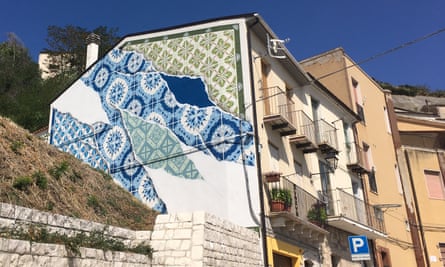
Every Molise hill seems topped with an ancient town, many with just a few hundred inhabitants, all with a square offering stunning views. Atmospheric Civitacampomarano tries to fight ongoing depopulation with striking street art. The whole town is now an open-air gallery, with works of art on gable ends, rough stone walls and venerable wooden doors, and there’s an annual festival in September run by artist Alice Pasquini.
Towards the Campania border, Guardiaregia is on the edge of Molise’s grandest canyon, the Gole del Torrente Quirino, a WWF biodiversity reserve, with waymarked paths down into a wooded gorge with waterfalls and rock formations. There is a visitor centre in the town – opening hours are erratic – and noticeboards with routes and wildlife to spot.
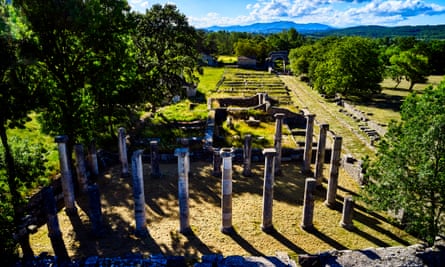
Two sites give a taste of when Molise was far more than a backwater. Saepinum (modern name Altilia), south of regional capital Campobasso, was already a substantial Samnite settlement when the Romans captured it in 293BC, and its ruins are well preserved. There’s no queue, no visitor centre, not even an entrance fee. There’s also little information, so we just used our imaginations wandering paved streets, remains of houses, temple pillars and an almost intact amphitheatre. There is a €3 fee for the small museum, showing fine Roman glassware, plus intricate brooches, dice, dolls and needles.
Pietrabbondante (entry €4), further north near the “bell town” of Agnone, is even older: its pre-Roman theatre, built by the Samnites in the sixth century BC, has amazing acoustics and its stone seating comes with elegant ergonomic back supports for ancient comfort during long festive evenings.
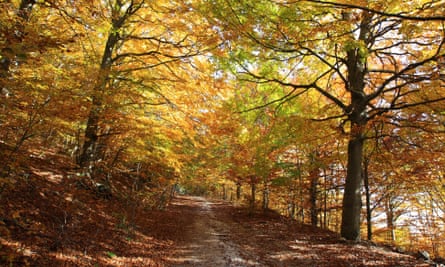
Heading higher into the mountains, the Montedimezzo reserve is a vast forest rising to 1,300 metres, once hunting grounds for Bourbon lords and now a Unesco Man and Biosphere (MAB) reserve. There are waymarked trails, and maps and GPS for longer treks can be downloaded from riservamabaltomolise.it. Deer, wild boar and large birds of prey live in the forest, but are shy: get a closer look at the rescue centre near the car park off SP Carovillense.
Higher still, the upper Volturno valley is a ski area in winter, dominated by the Mainarde mountains, and known for rock-climbing, fishing, canoeing and cycling in summer. From the village of Pizzone, there is wonderful walking up the Valle Fiorita (“flowered valley”), through ancient beech forest towards Monte Meta (2,242 metres), a massive limestone hulk rising suddenly from green meadows.
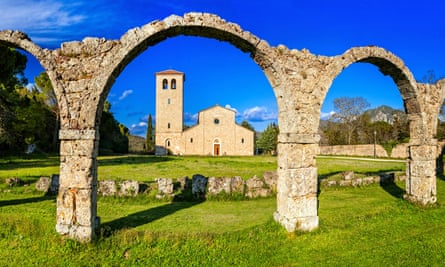
For lazier days there are beaches on Lago di Castel San Vincenzo, easy cycling on the 144km Ciclovia del Volturno, picnics under the medieval arches at the Abbazia del Volturno and, surprisingly, a comprehensive Museum of World Wars (entry €5) in the village of Rocchetta Nuova.
Stay
Il Palazzetto dei Briganti (doubles from €72 B&B) in Guardiaregia has spacious rooms in a historic building within walking distance of the gorge, and with a garden and bikes to borrow. Those brigands seem to have been great readers, judging from the piles of novels lying around, some open suggestively at an interesting chapter.
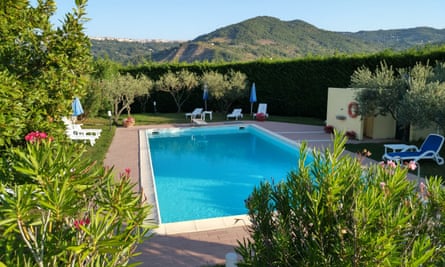
Near Agnone, Masseria Santa Lucia (doubles from €86 B&B) is an organic agriturismo run by motherly Emma and husband Decio, with four apartments, two doubles, a pool and homegrown dinners served with their own wine and peppery olive oil. These are usually eaten at long, convivial tables, but Covid has forced a little more separation.
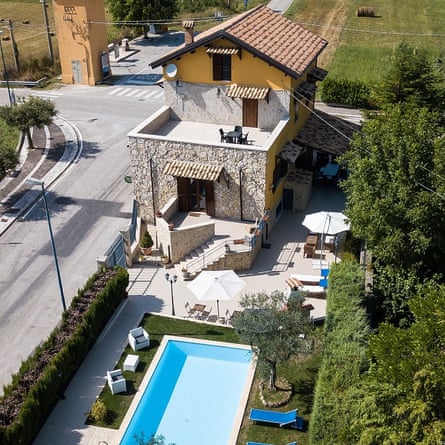
Up in the Volturno valley, Neapolitan lawyer Carmela Pera has created a homely guesthouse with pool, B&B La Sorgente (doubles from €75). It’s within walking distance of the Volturno’s pristine source at the foot of a sheer Mainarde mountain face, but also handy for ice-creams and pizza in Rocchetta Nuova.
Eat
It’s all family-run agriturismos up in the mountains. On the outskirts of Guardiaregia, Le Coccole is a restored farmhouse offering rustic dinners – homemade pasta, roast meats – on a panoramic terrace. In the upper Volturno valley, Taverna Verdicchio does great filled pasta dishes, mushroomy stews and pizzas.
